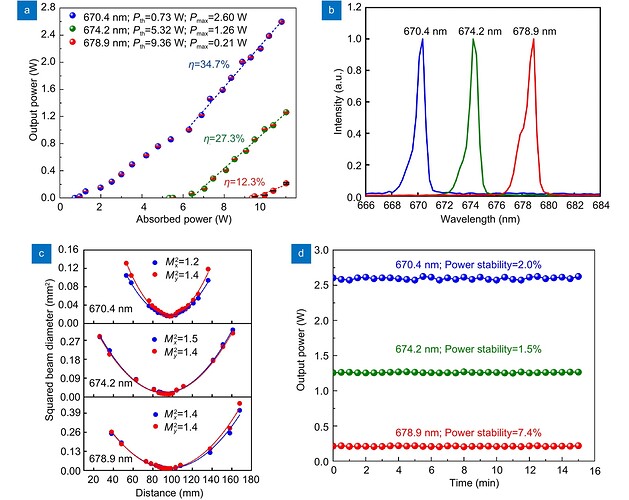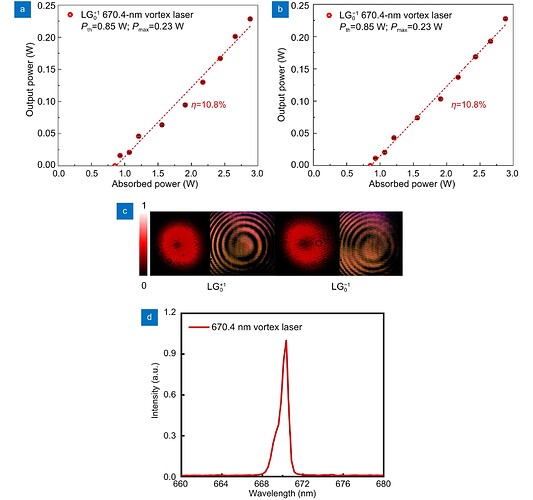Visible laser sources around 670 nm are in great demand in biomedical fields, such as photocoagulation1, photothermolysis2, hemangioma treatment3, treatment of melasma4, treatment of acne scars5 and phototherapies6-8. Optical vortex lasers are also of great value in a wide scope of applications, especially in nanosurgery and nanomanipulation9-11. Benefiting from low absorption coefficients of 670 nm wavelength in some types of skin, subcutaneous, and muscle tissues12, the 670-nm vortex laser may have the potential to manipulate particles (like erythrocytes) in these tissues.
In general, laser operations around 670 nm are generated by the conventional frequency-doubled Nd:YVO4 lasers13 and the AlGaInP/AlGaAs diode lasers14. Compared with the frequency-converted lasers, the diode-pumped solid-state lasers that can be directly generated are simple, robust, and cost-effective laser sources that can provide high laser efficiency. Owing to the inherent good beam quality, laser sources directly emitting around 670 nm also show obvious advantages over the currently available diode lasers. The Pr3+:YLF crystal is a highlighted active medium for the direct generation of diode-pumped visible lasers15-18. This is mainly due to the fact that Pr3+ ions provide abundant emission lines between 500 nm and 750 nm with large peak emission cross-sections, which is typically in an order of 10-19 cm2 19-20. Nevertheless, laser operations around 670 nm based on a Pr3+:YLF crystal were rarely reported21-22, and the highest output power (0.96 W) and the highest slope efficiency (12.7%) achieved so far were relatively low. Therefore, we proposed a novel wavelength-switchable continuous-wave (CW) visible Pr3+:YLF lasers around 670 nm. Record-high output power (2.6 W) and record-high slope efficiency (34.7%) were achieved for the π-polarized laser operation at 670.4 nm, which were more than two times higher than the values reported before. With two etalons inserted into the cavity, the single-wavelength σ-polarized lasings at 674.2 nm and 678.9 nm were realized for the first time, and high output powers of 1.26 W and 0.21 W were achieved with high slope efficiencies of 27.3% and 12.3%, respectively. At all three wavelengths, the beam qualities of the proposed lasers were competitive with all the M2 factors in the horizontal (x) and the vertical (y) directions below 1.6. Multi-wavelength laser operations around 670 nm were also obtained by both etalons combinations. Furthermore, visible first-order vortex lasers (both and modes) at 670.4 nm were firstly obtained by off-axis pumping. We believe such a novel visible laser around 670 nm could provide cost-effective techniques for emerging biomedical applications.
https://www.oejournal.org/article/doi/10.29026/oea.2021.210006


